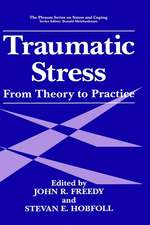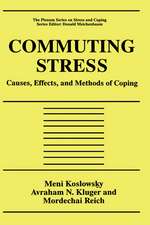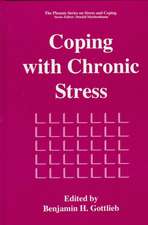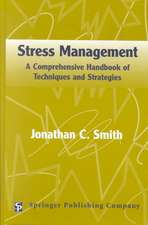Extreme Stress and Communities: Impact and Intervention: NATO Science Series D:, cartea 80
Editat de S.E. Hobfoll, Marten W. de Vriesen Limba Engleză Paperback – 7 dec 2010
| Toate formatele și edițiile | Preț | Express |
|---|---|---|
| Paperback (1) | 1828.29 lei 43-57 zile | |
| SPRINGER NETHERLANDS – 7 dec 2010 | 1828.29 lei 43-57 zile | |
| Hardback (1) | 1834.77 lei 43-57 zile | |
| SPRINGER NETHERLANDS – 31 mai 1995 | 1834.77 lei 43-57 zile |
Din seria NATO Science Series D:
- 18%
 Preț: 1223.25 lei
Preț: 1223.25 lei -
 Preț: 399.88 lei
Preț: 399.88 lei -
 Preț: 398.74 lei
Preț: 398.74 lei - 18%
 Preț: 953.35 lei
Preț: 953.35 lei -
 Preț: 389.88 lei
Preț: 389.88 lei - 18%
 Preț: 1230.53 lei
Preț: 1230.53 lei -
 Preț: 399.29 lei
Preț: 399.29 lei - 18%
 Preț: 953.35 lei
Preț: 953.35 lei - 18%
 Preț: 1226.90 lei
Preț: 1226.90 lei - 5%
 Preț: 390.13 lei
Preț: 390.13 lei - 5%
 Preț: 370.94 lei
Preț: 370.94 lei -
 Preț: 412.95 lei
Preț: 412.95 lei - 18%
 Preț: 1224.18 lei
Preț: 1224.18 lei - 15%
 Preț: 480.20 lei
Preț: 480.20 lei -
 Preț: 412.95 lei
Preț: 412.95 lei - 18%
 Preț: 1226.73 lei
Preț: 1226.73 lei - 5%
 Preț: 2124.15 lei
Preț: 2124.15 lei - 15%
 Preț: 638.11 lei
Preț: 638.11 lei - 18%
 Preț: 1833.16 lei
Preț: 1833.16 lei -
 Preț: 401.24 lei
Preț: 401.24 lei -
 Preț: 390.84 lei
Preț: 390.84 lei - 18%
 Preț: 1237.80 lei
Preț: 1237.80 lei - 18%
 Preț: 1826.69 lei
Preț: 1826.69 lei - 18%
 Preț: 1830.34 lei
Preț: 1830.34 lei -
 Preț: 388.13 lei
Preț: 388.13 lei - 18%
 Preț: 948.47 lei
Preț: 948.47 lei - 18%
 Preț: 1835.53 lei
Preț: 1835.53 lei - 18%
 Preț: 1227.67 lei
Preț: 1227.67 lei - 18%
 Preț: 1225.79 lei
Preț: 1225.79 lei -
 Preț: 398.53 lei
Preț: 398.53 lei - 18%
 Preț: 1831.73 lei
Preț: 1831.73 lei -
 Preț: 396.24 lei
Preț: 396.24 lei - 18%
 Preț: 1661.13 lei
Preț: 1661.13 lei
Preț: 1828.29 lei
Preț vechi: 2229.62 lei
-18% Nou
Puncte Express: 2742
Preț estimativ în valută:
349.95€ • 380.26$ • 294.15£
349.95€ • 380.26$ • 294.15£
Carte tipărită la comandă
Livrare economică 21 aprilie-05 mai
Preluare comenzi: 021 569.72.76
Specificații
ISBN-13: 9789048145485
ISBN-10: 9048145481
Pagini: 560
Ilustrații: XXII, 536 p.
Dimensiuni: 155 x 235 x 29 mm
Greutate: 0.78 kg
Ediția:Softcover reprint of hardcover 1st ed. 1995
Editura: SPRINGER NETHERLANDS
Colecția Springer
Seria NATO Science Series D:
Locul publicării:Dordrecht, Netherlands
ISBN-10: 9048145481
Pagini: 560
Ilustrații: XXII, 536 p.
Dimensiuni: 155 x 235 x 29 mm
Greutate: 0.78 kg
Ediția:Softcover reprint of hardcover 1st ed. 1995
Editura: SPRINGER NETHERLANDS
Colecția Springer
Seria NATO Science Series D:
Locul publicării:Dordrecht, Netherlands
Public țintă
ResearchCuprins
Section I: Introduction: Focusing on the Community in the Case of Extreme Stress.- 1. The Community Context of Disaster and Traumatic Stress: An Ecological Perspective from Community Psychology.- Section II: Basic Stress Concepts and Where They Lead in the Study of Community Stress.- 2. Disasters, Stress and Cognition.- 3. Temperament Risk Factor: The Contribution of Temperament to the Consequences of the State of Stress.- 4. Coping with the Loss of a Family Member: Implications for Community-Level Research and Intervention.- 5. Individual and Community Stress: Integration of Approaches at Different Levels.- Section III: Resources to Offset Stress: Applications to the Community Context.- 6. Community Stress and Resources: Actions and Reactions.- 7. Optimistic Self-Beliefs as a Resource Factor in Coping with Stress.- 8. Stress and Social Support.- Section IV: Bridges to Community Stress.- 9. Prevention of the Consequences of Man-Made or Natural Disaster at the (Inter)National, the Community, the Family, and the Individual Level.- 10. The Pathogenic Effects of War Stress: The Israeli Experience.- 11. Stress and Diasaster.- 12. Methodological Issues in Designing Research on Community-Wide Disasters with Special Reference to Chernobyl.- 13. Research Methods and Directions: Establishing the Community Context.- Section V: Long-Term Effects of Community Stress.- 14. Long-Term Consequences of Disasters.- 15. Endurance and Living: Long-Term Effects of the Holocaust.- 16. Reverberation Theory: Stress and Racism in Hierarchically Structured Communities.- 17. Culture, Community and Catastrophe: Issues in Understanding Communities under Difficult Conditions.- Section VI: Prevention and Intervention.- 18. Preventive Psychosocial Intervention after Disaster.- 19. The Treatment of PostTraumatic Stress Disorder.- 20. Strategies of Disaster Intervention for Children and Adolescents.- 21. Catalyzing Community Support.- 22. Prevention and Treatment of Community Stress: How to be a Mental Health Expert at the Time of Disaster.- 23. Intervention Strategies for Emergency Response Groups: A New Conceptual Framework.- Conclusions: Addressing Communities under Extreme Stress.

















